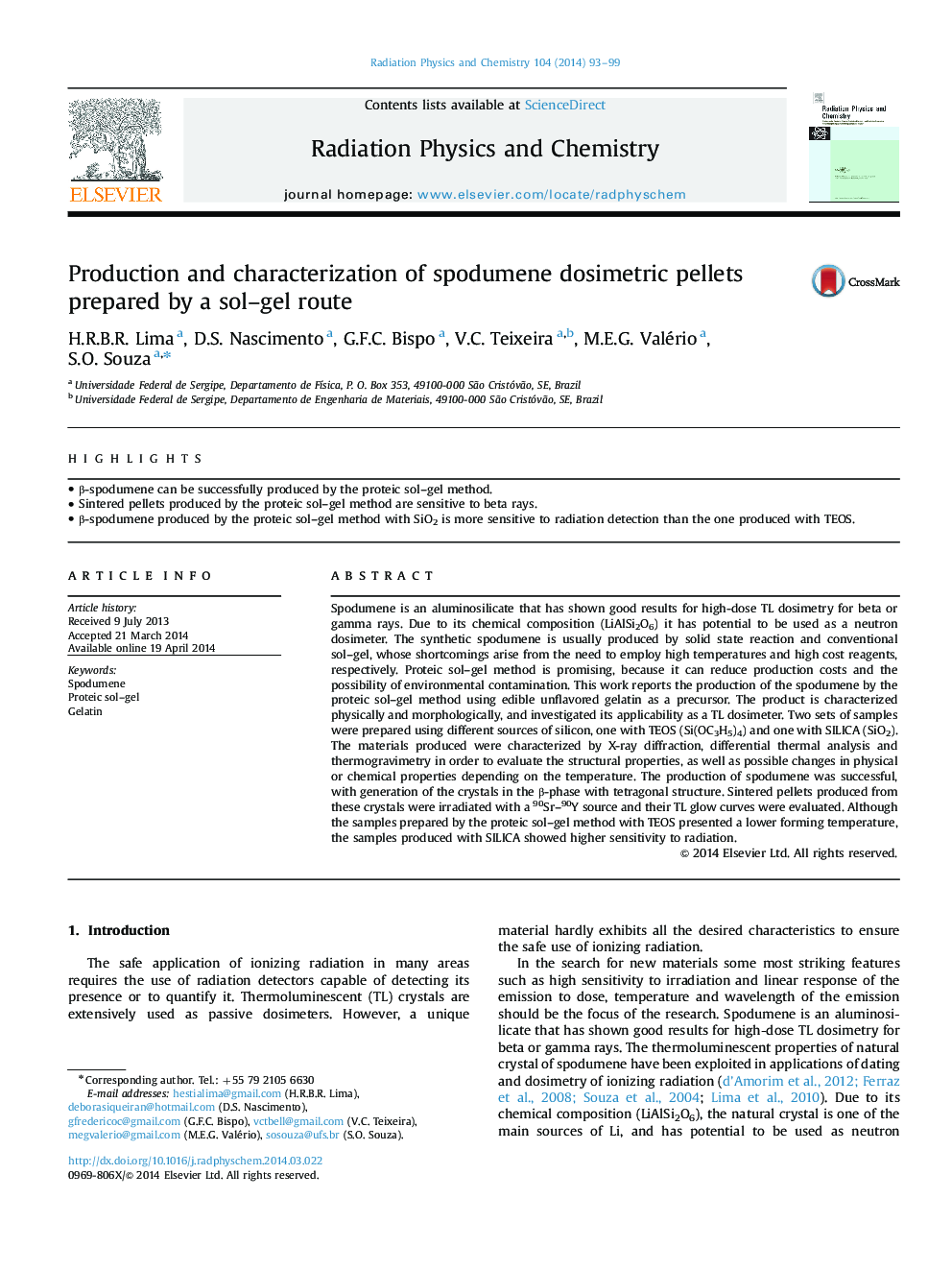| کد مقاله | کد نشریه | سال انتشار | مقاله انگلیسی | نسخه تمام متن |
|---|---|---|---|---|
| 1883357 | 1533520 | 2014 | 7 صفحه PDF | دانلود رایگان |
• β-spodumene can be successfully produced by the proteic sol–gel method.
• Sintered pellets produced by the proteic sol–gel method are sensitive to beta rays.
• β-spodumene produced by the proteic sol–gel method with SiO2 is more sensitive to radiation detection than the one produced with TEOS.
Spodumene is an aluminosilicate that has shown good results for high-dose TL dosimetry for beta or gamma rays. Due to its chemical composition (LiAlSi2O6) it has potential to be used as a neutron dosimeter. The synthetic spodumene is usually produced by solid state reaction and conventional sol–gel, whose shortcomings arise from the need to employ high temperatures and high cost reagents, respectively. Proteic sol–gel method is promising, because it can reduce production costs and the possibility of environmental contamination. This work reports the production of the spodumene by the proteic sol–gel method using edible unflavored gelatin as a precursor. The product is characterized physically and morphologically, and investigated its applicability as a TL dosimeter. Two sets of samples were prepared using different sources of silicon, one with TEOS (Si(OC3H5)4) and one with SILICA (SiO2). The materials produced were characterized by X-ray diffraction, differential thermal analysis and thermogravimetry in order to evaluate the structural properties, as well as possible changes in physical or chemical properties depending on the temperature. The production of spodumene was successful, with generation of the crystals in the β-phase with tetragonal structure. Sintered pellets produced from these crystals were irradiated with a 90Sr–90Y source and their TL glow curves were evaluated. Although the samples prepared by the proteic sol–gel method with TEOS presented a lower forming temperature, the samples produced with SILICA showed higher sensitivity to radiation.
Journal: Radiation Physics and Chemistry - Volume 104, November 2014, Pages 93–99
